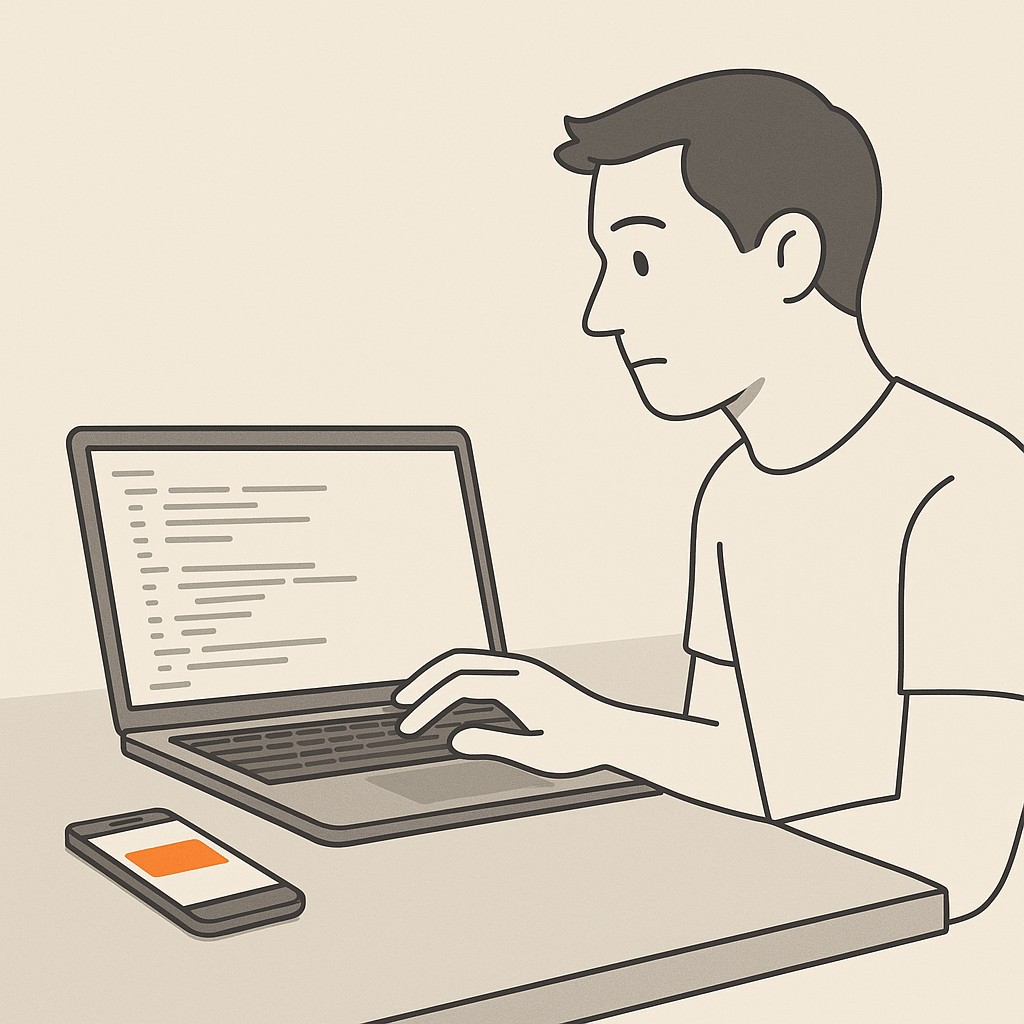Information Diet for Engineers: Protect Focus Without Losing Out
Information Diet for Engineers: Protect Focus Without Losing Out

When a Single Notification Hijacks Your Workday
It happened to me last Tuesday. One push notification, and somehow I ended up watching Roman Empire videos during what was supposed to be a focus block. If you find yourself lost in Roman aqueduct documentaries during the workday, it’s a sign you need an information diet for engineers.
That notification kicked off 45 minutes of doomscrolling. The kicker? The mere presence of your smartphone drops your attention performance noticeably, and engineers working without it score higher on focus tasks by nearly 10 points (source). That time wasn’t spent getting smarter. It was just distraction, packaged as “staying informed.”

This isn’t a random fluke for engineers and AI builders. It’s Slack pings mid-code review, feeds that update faster than you can even read, recommendation engines firing off “one more thing” when you’re supposed to be deep in thought. The problem gets baked into our workflows. Every “quick check” isn’t quick—a single interruption means you’ll spend about twenty-three minutes regaining full focus (source). No wonder context switches are killing productivity.
Look, I love a good post about Notion setup as much as anyone. But honestly even “useful” content becomes just another rabbit hole when it pops up while I’m trying to ship something.
If it shows up uninvited mid-workflow, we’ve got a problem.
Attention—An Input Worth Defending
I first came across the idea of an information diet from Tim Ferriss maybe five or six years ago, and it’s stuck with me way more than most productivity “hacks.” At the time, I figured it was just another clever metaphor for marketers, but it started shaping how I looked at my constant input overload.
Here’s the core principle. Attention is a resource, one that’s ruthlessly finite. If you don’t direct it, something else absolutely will. Think of it like CPU cycles: any thread you don’t manage gets hijacked by something noisier.
But—and this was the key—it’s not about shutting out the world or knowing less. Ferriss’s “information diet” is really about selecting what gets to rent space in your brain. Just like I wouldn’t run random code on production, I shouldn’t let any feed or Slack thread siphon off my focus unless I consciously invite it in. Curating inputs sharpens engineering decisions and cuts down on that low-grade cognitive fog that creeps in when you’re chasing everything at once.
I used to think being constantly available was the same as being informed. But staying informed is not the same as being on call to every digital interruption. If something pulls you in when you didn’t plan to be there, it’s a trap. Those “just in case” glances at feeds never actually catch real emergencies—they usually just catch your attention and run with it.
You might worry that closing gates means you’ll miss something urgent, lose those accidental discoveries, or spend more energy keeping distractions out than you get back in focus. I’ve absolutely had those doubts myself. But gating inputs, scheduling when you actually consume information, and being explicit about how truly urgent things escalate to you—they’re not about building walls and hoping for the best. Instead, these steps let you stay in control of your pipelines. You reduce context switching, hold onto serendipity (on your terms), and ensure blind spots are rare, not routine. It’s an upfront investment, sure, but protecting your attention this way pays off in deeper work, steadier momentum, and way less stress about keeping up.
Some days, I still catch myself thinking I should read everything just in case. I know it’s mostly noise, but old habits are stubborn.
Curate Inputs for Deep Work With an Information Diet for Engineers
Start by laying everything out in front of you. Open your notification settings, scan your favorite feeds, jot down the channels, newsletters, recurring DMs—every digital doorbell that can grab your attention. For each, curate quality sources and label the rest as noise or “reactive”—the stuff that pulls you in on its schedule, not yours.
Here’s where you put guardrails on the flood. Lock in specific windows to schedule information intake—maybe two short batches per day, mid-morning and late afternoon. Set Focus modes so only critical alerts cut through when you’re deep in code. Batch checks for Slack, Discord, or email, and lay out rules: if it’s not on your calendar or explicitly urgent, it waits. I found that starting each day with a non-hype, fact-based newsletter closes the open news loop before distractions build. If you bookend your day with one reliable source, you won’t keep half an eye on breaking news for the rest of the afternoon.
Pick a lane. Will you catch up on news in the morning before your brain’s in builder mode, or in the evening after shipping for the day? Make it finite. Guilt-free scrolling doesn’t start until your deep work is done.
The other day, I stopped mid-debug when I realized I hadn’t eaten lunch but had somehow memorized the lineage of every Roman emperor. I ended up microwaving leftovers and just staring at the fridge magnets, thinking about how context switches feel physical. It’s odd how a sharp change in focus leaves a trace, even outside of work. Anyway, naming the trap—like calling out the rabbit hole—helps tug attention back to where it needs to be.
For reactive apps and channels, set up explicit protocols so you’re not in constant response mode. You can define VIP alerts for genuinely urgent messages—think PagerDuty or your lead PM. Mark dedicated emergency channels so everyone knows where to reach you when escalation is real. For everything else—Slack threads, non-critical emails—set triage blocks on your calendar and stick to them. Tell your team, “I check email at 11 and 4.” By batching responses, you protect deep work for engineers from fragmentation. This clear, upfront framing cuts down the cycle of endless back-and-forth—research—so your momentum holds steady, and no single ping derails your focus. You’ll still catch what matters, but on your terms, not the algorithm’s.
Engineering Attention—The Input Control Blueprint
Start your developer information diet by scrubbing your notification hygiene. Turn off badges everywhere except for true emergencies. Silence all promotional pushes, and set Focus filters for each major project so only work-relevant signals get through. When you install new apps, go opt in for notifications. That’s one tiny switch, but it makes a huge difference. If something’s truly important, it’ll make itself known outside of whatever default alert setting the app wants.
On Slack, discipline is everything. Block time on your calendar for Do Not Disturb, and don’t just hit the button reactively. Set rules so only essential channels ping you, and restrict @channel mentions so you don’t get swept into someone else’s urgency. Threads are your friend. Keep big conversations off main channels, then check in twice daily, mid-morning and late afternoon. That way, collaboration becomes deliberate, not a constant pull. It’s just easier when you treat Slack like a meeting, not a background hum.
Email should be on your schedule, not the inbox’s. Filter out newsletters you never read, snooze anything not actionable, and keep a VIP list for the handful of folks who truly need instant reach. This turns your email into a tool you use when you choose, not a slot machine flashing badges every ten minutes. There’s less dopamine, but a lot more momentum.
Here’s the most practical friction add. Feeds need speed bumps. Disable autoplay and infinite scroll on every platform you can. Don’t let videos just roll or tweets keep stacking. Unfollow anyone whose posts aren’t directly helpful, and unsubscribe from noisy lists. Block those manipulative app alerts before they ever reach you. It’s not overkill; it’s taking back what you’ve given away. Every major online platform is packed with these extended-use design features—100% of VLOPs are built to keep you stuck with autoplay, infinite scroll, and manipulative alerts. Don’t let their “engagement maximizers” choose how long you spend where. It’s your context; they only get access when you’re done with what actually matters.
Setting up these gates is part of an information diet for engineers, not about being hard on yourself. It’s about recognizing how many small defaults rob deep work, then flipping those switches so you get longer runs of focus, just because you built the boundaries beforehand. You’ll feel the difference. The day’s less reactive, your attention sticks to the problems that pay off. That’s how you keep building, not just chasing.
Protecting Focus Without Losing Out
Here’s the worry everyone has: what if you miss something big? In my own setup, I’ve carved out a few escalation lanes. Actual emergencies use an on-call pager (or a phone call if it’s truly urgent), and critical issues route through a tight set of Slack channels or dedicated incident rooms. Everything else—the noise, the FYIs, even the “please review this” stuff—waits. Escalation protocols mean you’re not gambling with outages or production bugs, just insulating focus from noise. It’s a relief when you realize the real fires always make it through, and you’re not on edge waiting for every ping.
Don’t want to give up all those surprising finds, either? Schedule a weekly exploration window—really put it on your calendar—so you have space to chase down new interests on purpose. I keep a bookmarks folder just called “Later.” Any promising link gets parked there until I batch-browse in that window. If you miss the thrill of accidental discovery, try curated newsletters or aggregator digests. They surface enough novelty without opening the infinite feed. I’ll admit, it’s never quite as exciting as stumbling into something at random, but my focus is definitely better for it.
How do you know this “diet” is actually working? Track your deep work blocks—how many can you actually string together each week? Keep an eye on context switches—count the times you jump between coding, chat, and email. I watch commit frequency and incident resolution times—two signals that actually matter for engineering output. When the trendlines move in the right direction, you know the investment in boundaries is paying off. More code shipped, less flailing, and steadier responses when production burns.
Generate clean drafts, docs, and posts with an AI assistant on your schedule, reducing back-and-forth and helping you publish without pulling attention away from your deep work.
Remember those Roman Empire videos from earlier? That’s when I realized: distraction always feels like it’s about something interesting, but the cost is quiet. It sneaks up, layer by layer, until you’re not even sure when you lost half an hour.
The next time a push notification lands during your workday, make yourself a deal. Delay checking until your next scheduled window, then notice how much further your focus really goes.
Give this a shot—start an information diet by beginning or ending your day with a single, fact-based newsletter to close the news loop on your own terms. It doesn’t take more than a few minutes, and your mind stays open for the work you actually care about.
Enjoyed this post? For more insights on engineering leadership, mindful productivity, and navigating the modern workday, follow me on LinkedIn to stay inspired and join the conversation.
You can also view and comment on the original post here .
